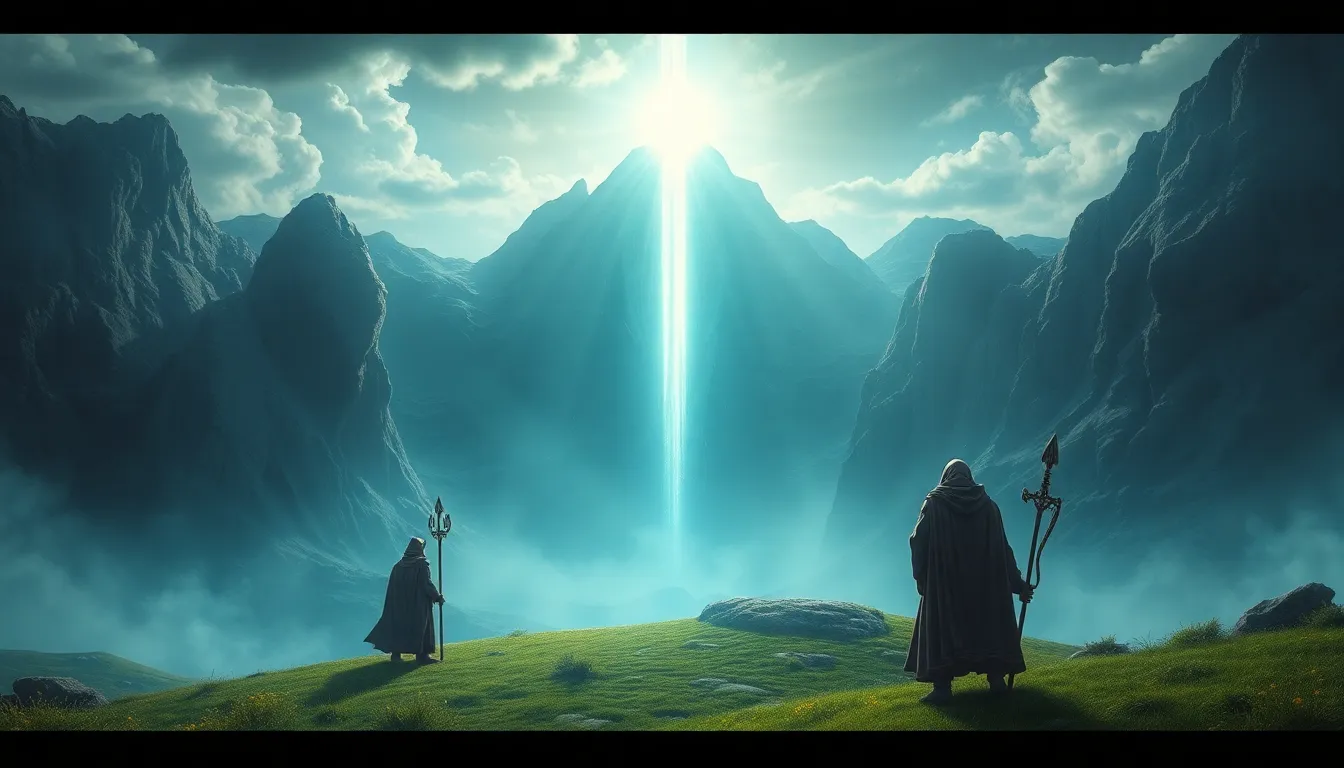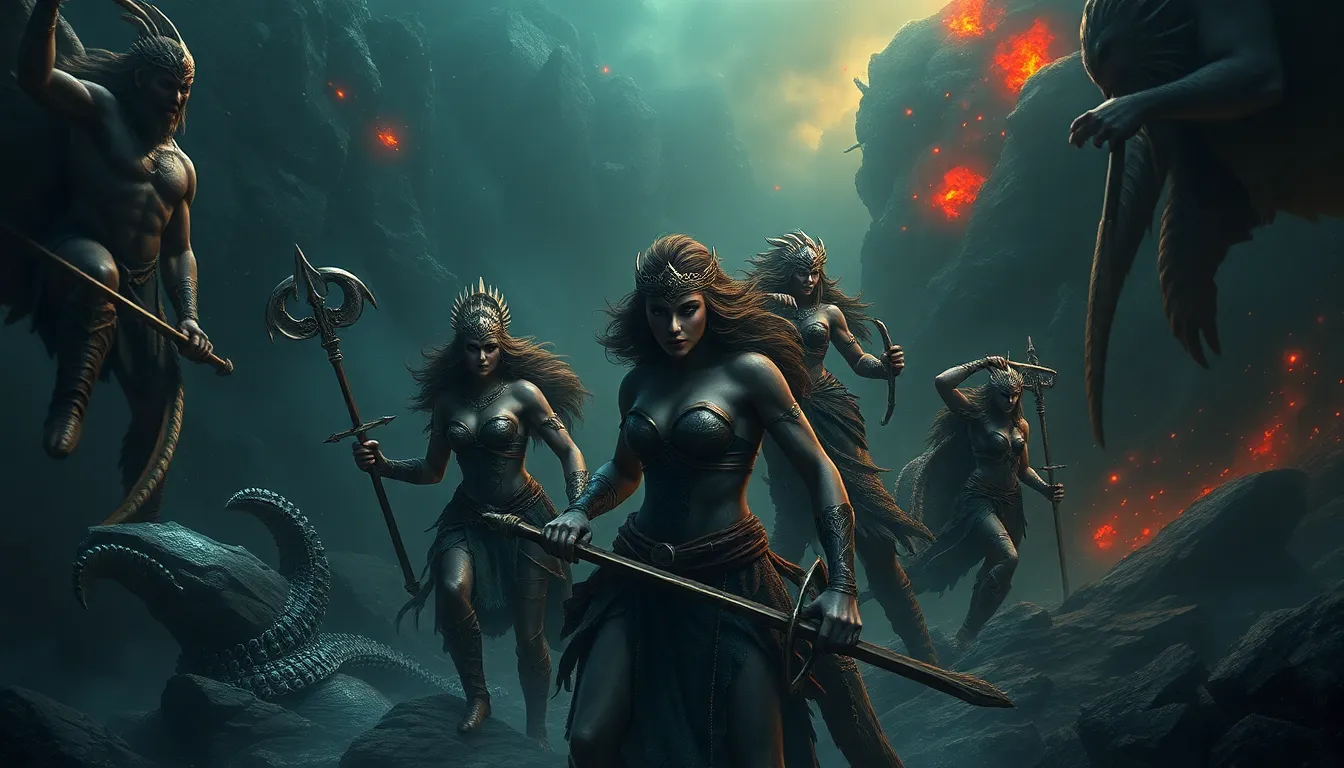The Kingdom of the Cosmic Dreamers: Myths of Imagination and Creativity
Introduction: The Intersection of Myth and Creativity
The concept of “Cosmic Dreamers” represents individuals who transcend the mundane and tap into the limitless potential of imagination. These figures are celebrated across various cultures, embodying the spirit of creativity and the human quest for understanding our place in the universe. The relationship between imagination and mythology is profound; myths serve as vessels for expressing our deepest desires, fears, and aspirations, allowing us to navigate the complexities of existence through storytelling.
Historical Context: Myths as Catalysts for Creativity
Throughout history, myths have acted as catalysts for creativity, inspiring artistic expression in countless forms. From the epic tales of ancient civilizations to the folklore of indigenous peoples, these narratives have shaped cultural identity and artistic endeavors. For instance:
- Ancient Greece: The Greeks revered the Muses, goddesses of inspiration, who were believed to bestow creativity upon artists, poets, and philosophers.
- Indigenous Cultures: Many Indigenous cultures worldwide weave creativity into their myths, employing storytelling as a means to pass down knowledge and cultural values.
These examples illustrate how myths have historically influenced artistic creativity and expression across different societies.
The Role of Imagination in Myth Creation
Imagination is the driving force behind the creation of myths. It allows individuals to envision worlds beyond their own and to construct narratives that reflect their hopes and fears. Many mythical figures personify this creative spirit:
- The Muses: In Greek mythology, the Muses inspire creativity in the arts and sciences.
- Trickster Figures: Characters like Loki in Norse mythology and Coyote in Native American lore embody the playful, subversive aspects of creativity, challenging norms and sparking new ideas.
These figures not only represent creativity but also demonstrate the dynamic relationship between imagination and the myth-making process.
Cosmic Dreamers: Archetypes and Symbolism
The archetypal characteristics of Cosmic Dreamers permeate various myths, often symbolizing the duality of creation and destruction, innovation and chaos. These archetypes can be identified through several key traits:
- Visionaries: Cosmic Dreamers possess the ability to see beyond the present and envision new possibilities.
- Transformers: They often bring change, challenging the status quo and inspiring others to embrace their creativity.
- Connectors: Cosmic Dreamers link disparate ideas, cultures, and traditions, fostering a rich tapestry of creativity.
These symbolic meanings attached to creativity and imagination highlight the importance of these archetypes in understanding human experience.
Cultural Variations: Myths of Creativity Across the Globe
Different cultures perceive creativity through their unique mythological lenses. Some notable examples include:
- Native American Myths: Many tribes feature creation stories that emphasize harmony with nature and the role of the Creator as a cosmic artist.
- African Myths: In many African traditions, trickster figures like Anansi the Spider illustrate the importance of wit and wisdom in creative problem-solving.
- Asian Myths: In Hindu mythology, Ganesha, the remover of obstacles, is also the patron of arts and sciences, symbolizing the creative process.
These cultural variations highlight the diverse ways in which creativity is celebrated and understood across the globe.
The Psychological Dimension: Imagination as a Tool for Growth
Psychological theories, particularly those of Carl Jung, emphasize the significance of imagination in personal and collective growth. Jungian archetypes suggest that myths serve as a framework for understanding the human psyche. They provide insights into:
- Personal Growth: Engaging with myths can help individuals explore their inner selves and confront their fears and aspirations.
- Collective Identity: Myths reflect shared values and beliefs, fostering a sense of community and continuity across generations.
This psychological dimension underscores the importance of imagination in navigating life’s challenges.
Modern Interpretations: Myths in Contemporary Creativity
In the contemporary world, artists, writers, and innovators continue to draw inspiration from ancient myths. Notable case studies include:
- Literature: Authors like Neil Gaiman and Margaret Atwood often weave mythological themes into their narratives, reinterpreting ancient tales for modern audiences.
- Visual Arts: Contemporary artists utilize myths to explore identity, culture, and the human experience, creating works that resonate with today’s societal issues.
These modern interpretations demonstrate the enduring relevance of myths in fostering creativity and innovation.
The Cosmic Dreamer in Popular Culture
The portrayal of Cosmic Dreamers in popular culture reflects societal views on creativity and imagination. Films, literature, and art often depict these figures as:
- Visionaries: Characters like Willy Wonka and the Mad Hatter embody the whimsical and inspirational aspects of creativity.
- Rebels: Figures such as Frida Kahlo and Banksy challenge conventional norms, inspiring others to embrace their unique visions.
These representations influence how society values creativity and encourages individuals to embrace their inner Cosmic Dreamer.
Fostering Creativity: Lessons from Mythology
Mythological narratives offer practical insights for enhancing creative thinking today. Some tips for individuals seeking to tap into their inner Cosmic Dreamer include:
- Engage with Myths: Read and reflect on myths from various cultures to gain new perspectives on creativity.
- Embrace Playfulness: Allow yourself to experiment and take risks, much like trickster figures in mythology.
- Collaborate: Work with others to combine ideas and create something new, echoing the collaborative spirit of many myths.
By applying these lessons, individuals can unlock their creative potential.
Conclusion: The Eternal Relevance of Myths in Imagination and Creativity
In conclusion, the exploration of Cosmic Dreamers and their myths reveals the profound connection between imagination and creativity. From historical contexts to modern interpretations, myths continue to inspire and shape our understanding of the creative process. As we navigate the complexities of our lives, we can draw on the wisdom of these narratives to foster our own creativity and inspire future generations of dreamers and creators. The enduring power of myths serves as a reminder that imagination knows no bounds and that each of us has the potential to become a Cosmic Dreamer.



